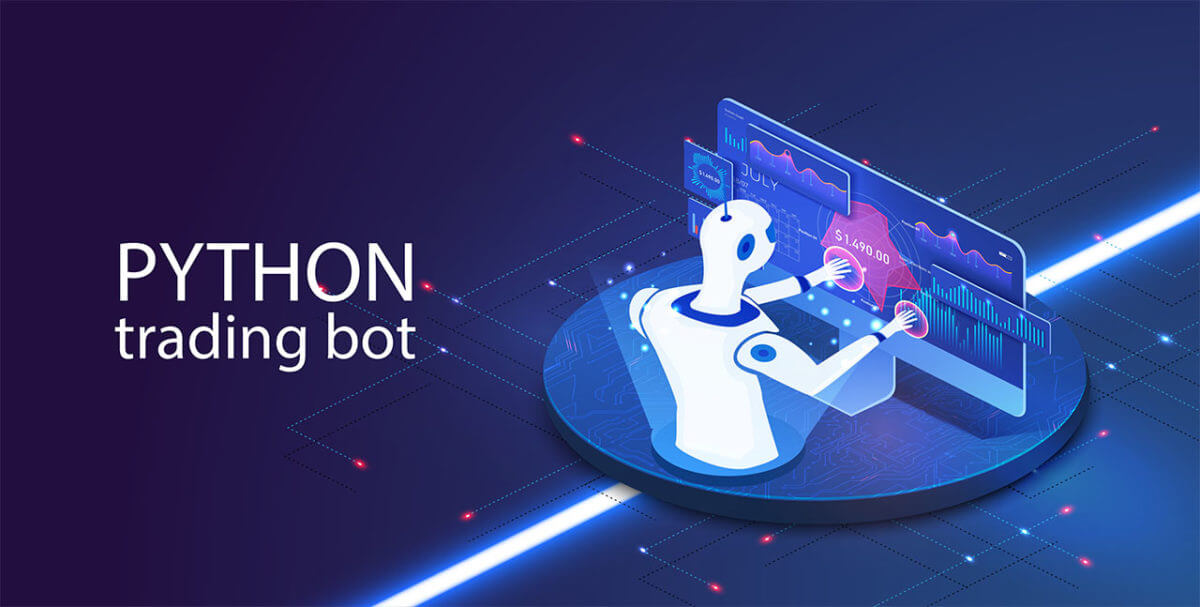Unleashing the Power of Quantum Computing in Algorithmic Trading
Quantum computing has emerged as a revolutionary force set to redefine numerous industries, including finance and algorithmic trading. Its unique computational capabilities enable rapid processing of complex calculations, making it particularly appealing for high-frequency trading operations where time efficiency is paramount. However, harnessing this power requires proficiency in specialized programming languages and tools distinct from classical computation.
Code samples tailored explicitly for quantum trading bots offer developers a valuable resource to learn, experiment, and integrate these advanced technologies into their projects. By leveraging pre-built modules and functions, programmers can significantly reduce development time and minimize errors associated with manual coding. This article highlights the necessity of understanding and employing relevant code samples to excel in the burgeoning field of quantum trading bots development.

Essential Code Samples for Building Quantum Trading Bots
When embarking on the journey to develop quantum trading bots, having access to proven and functional code samples becomes an indispensable asset. These resources not only expedite the development process but also serve as practical guides for mastering intricate quantum algorithms and protocols. Here are some essential code samples every developer should explore:
- “Qiskit Finance”: Qiskit Finance is an open-source library developed by IBM aimed at simplifying financial modeling tasks using quantum computers. It provides a variety of quantum-native financial models along with tutorials and documentation (Explore Qiskit Finance). Developers can leverage this resource to build sophisticated trading strategies based on real-world market scenarios.
- “Cirq Portfolio Optimization Example”: Google’s Cirq framework offers several example applications illustrating different aspects of quantum computing. Among those, the portfolio optimization example showcases how to apply quantum algorithms to optimally allocate assets within a given budget constraint (Access Cirq Portfolio Optimization Example). Applying similar principles, one could construct customized portfolios catered to individual risk appetites and investment goals.
- “Pennylane Quantum Financials Tutorials”: Pennylane, another versatile quantum computing platform, features extensive tutorials dedicated to applying quantum machine learning techniques to financial problems (Visit Pennylane Quantum Financials Tutorials). Leveraging these materials enables developers to incorporate cutting-edge AI methodologies into their trading bots, thereby enhancing adaptability and predictive accuracy.
By incorporating these essential code samples into their workflow, developers stand to gain significant advantages in terms of both productivity and innovation. As always, remember to thoroughly review each sample’s licensing agreement before integration to avoid any legal complications.

How to Implement Quantum Algorithms in Your Trading Bot
To harness the true power of quantum computing in developing high-performance trading bots, it’s crucial to understand and effectively implement popular quantum algorithms like Grover’s and Shor’s. This section will guide you through implementing these groundbreaking algorithms using readily available code samples.
Grover’s Algorithm
Discovered by Lov K. Grover in 1996, Grover’s algorithm serves as a remarkable speedup over classical search methods. Its primary application lies in searching unsorted databases quadratically faster than classic counterparts. To employ Grover’s algorithm in your trading bot, follow these steps:
- Initialize a uniform superposition over all database elements.
- Apply the Oracle function, which marks the desired element(s) with a negative sign.
- Perform the diffusion operation, amplifying the amplitude of marked states.
- Repeat steps two and three until convergence.
The following Python code snippet adapted from Qiskit exemplifies Grover’s algorithm implementation:
from qiskit import QuantumCircuit, transpile, assemble, Aer, execute
from qiskit.visualization import plot_histogram, plot_bloch_vector
import math
Create a Quantum Circuit acting on a quantum register of n qubits
def grovers(n):
qr = QuantumRegister(n)
cr = ClassicalRegister(n)
circ = QuantumCircuit(qr, cr)
Apply Hadamard gates to put the qubits in superposition
for i in range(n):
circ.h(qr[i])
Define the oracle – here we simply flip the phase if the last bit is 1
if n % 2 == 0:
circ.cz(qr[-2], qr[-1])
else:
circ.cx(qr[-2], qr[-1])
circ.z(qr[-1])
circ.cx(qr[-2], qr[-1])
Perform diffusing operation
circ.h(qr
0
)
circ.cp(-math.pi / math.sqrt(2), qr
0
, qr
1
)
circ.h(qr
0
)
for j in range(1, int(n/2)):
circ.swap(qr[j], qr[n-j])
circ.h(qr
0
)
circ.cp(-math.pi / math.sqrt(2), qr
0
, qr
1
)
circ.h(qr
0
)
Measure the state
for k in range(n):
circ.measure(qr[k], cr[k])
return circ
Run simulation
simulator = Aer.get_backend(‘qasm_simulator’)
counts = execute(grovers(5), backend=simulator, shots=1000).result().get_counts()
print(“\nTotal count for 00, 01, 10 and 11 are:”,counts)
plot_histogram(counts)
Shor’s Algorithm
Peter Shor introduced his eponymous algorithm in 1994, revolutionizing factorization and discrete logarithm computational complexities. Traditional RSA encryption relies upon the difficulty of factoring large numbers; hence, efficient implementation of Shor’s algorithm poses severe threats to current cryptographic systems. The basic outline includes:
- Prepare a uniform superposition of integers between 0 and N-1.
- Modular exponentiation followed by a quantum Fourier transform.
- Measurement yields periodicity ‘r’, enabling prime factors calculation.
Regrettably, due to space constraints, presenting a concise yet informative code sample for Shor’s algorithm goes beyond our scope here. Nonetheless, I encourage interested readers to delve deeper into Qiskit’s official documentation covering Shor’s algorithm (Read More About Shor’s Algorithm)

Optimizing Quantum Trading Strategies with Sample Codes
Quantum computers offer immense potential for enhancing trading strategy performance compared to traditional approaches. By leveraging quantum annealing and gate model computation, traders can tackle complex problems more efficiently. Herein, we discuss several optimization techniques along with corresponding code samples to help you excel in building quantum trading bots.
Quantum Annealing Optimization Techniques
Quantum annealing exploits quantum tunneling effects to escape local minima during combinatorial optimization processes. D-Wave Systems Inc., a pioneering company in this field, provides access to quantum annealers capable of solving intricate portfolio optimization tasks. Utilize the following technique to optimize your trading strategies:
- Quadratic Unconstrained Binary Optimization (QUBO): Formulate your problem as a binary quadratic model (BQM) where variables represent decisions (e.g., buy, sell, hold) and weights correspond to costs or benefits associated with those choices. Then, map the BQM onto a QUBO matrix and input it into a quantum annealer solver.
For instance, Ocean software suite—D-Wave’s open-source library—facilitates easy integration of quantum annealing into your projects. Leverage pre-built dimod components to construct QUBO matrices and submit them for solution via the D-Wave API. Check out the detailed tutorial (D-Wave Tutorial) showcasing end-to-end workflows.
Gate Model Quantum Computing Optimization Techniques
In contrast to quantum annealing, gate model quantum computing employs unitary operations executed coherently across multiple qubits. Popular frameworks like Qiskit enable rapid prototyping of sophisticated quantum algorithms tailored for trading applications. Consider applying these optimization techniques:
- Variational Quantum Eigensolver (VQE): VQE approximates eigenvalues of Hamiltonians representing underlying physical systems. Adapt VQE to estimate optimal parameters governing financial models, thereby refining trading strategies based on risk assessment and return expectations.
- Quantum Approximate Optimization Algorithm (QAOA): QAOA generalizes VQE by incorporating alternating sequences of parameterized quantum evolution and measurement operators. Tailor QAOA to solve constrained optimization problems arising within trading scenarios.
Explore Qiskit’s extensive collection of tutorials (Qiskit Tutorials) detailing both theoretical underpinnings and practical usage of VQE and QAOA. These resources empower developers to build advanced quantum trading bots backed by robust optimization methodologies.
Integrating Quantum Trading Bots into Existing Platforms via Code Snippets
Once you have developed a functional quantum trading bot, the next logical step is to integrate it into your preferred platform. This process involves connecting your bot to external services, managing user interfaces, and handling data transmission. Fortunately, numerous code snippets facilitate seamless integration, enabling you to leverage the power of quantum computing in conjunction with conventional tools.
Identifying Suitable Integration Points
Begin by pinpointing suitable locations within your chosen platform(s) for embedding quantum trading capabilities. Common options include:
- Trade execution modules: Insert quantum decision-making logic before placing orders, allowing the bot to determine ideal actions based on market conditions.
- Risk management systems: Enhance risk assessments by incorporating quantum algorithms that evaluate large datasets more effectively than classical methods.
- Data analysis pipelines: Augment historical dataset analyses with quantum machine learning techniques, improving predictive accuracy and informing strategic decisions.
Utilizing Pre-Built Libraries and Frameworks
Numerous libraries and frameworks simplify the task of integrating quantum trading bots into existing platforms. For example:
- Pennylane: Developed by Xanadu, Pennylane facilitates differentiation and optimization of quantum circuits alongside classical neural networks. Combine Pennylane with TensorFlow or PyTorch to create hybrid quantum-classical machine learning models, which can be integrated directly into deep learning architectures.
- Q#: Microsoft’s domain-specific language enables developers to express quantum computations concisely and intuitively. Harness Q#’s interoperability features to incorporate quantum routines into Python applications, thus streamlining integration efforts.
Implementing Custom Code Snippets
Alternatively, craft bespoke code snippets tailored to your unique requirements. To do so:
- Establish clear communication channels between your quantum trading bot and the host platform using APIs, message queues, or other messaging protocols.
- Define functions responsible for packaging input data from the host platform, invoking the quantum trading bot, and returning processed results.
- Test each function thoroughly, verifying correct behavior and error handling mechanisms.
- Encapsulate the entire integration within a reusable module, promoting modularity and maintainability.
By employing these strategies and harnessing readily available code snippets, you can successfully merge quantum trading bots with existing platforms, unlocking unprecedented opportunities for innovation and growth in the realm of algorithmic finance.

Security Best Practices When Using Code Samples for Quantum Trading Bots
As you delve into the world of quantum trading bot development, adhering to stringent security measures becomes paramount. The sensitive nature of financial data necessitates robust safeguards against unauthorized access, tampering, and theft. By following established best practices and exercising caution during implementation, you can minimize risks associated with leveraging open-source code samples for your quantum trading bots.
Employ Secure Communication Channels
When transmitting information between components, opt for encrypted connections using secure protocols like HTTPS or TLS. Encryption ensures that even if an attacker intercepts the data flow, they cannot decipher or manipulate exchanged messages without possessing the necessary encryption keys.
Validate Input Data Thoroughly
Quantum trading bots often rely on external inputs to make informed decisions. However, malicious actors may attempt to exploit vulnerabilities by injecting harmful payloads (e.g., SQL injection attacks). Mitigate this threat by validating all incoming data rigorously, sanitizing any suspicious entries, and enforcing strict type constraints.
Limit Access Controls
Restrict system privileges only to authorized personnel, granting minimal permissions required for each role. Regularly review access logs and revoke unnecessary authorizations promptly. Utilize multi-factor authentication whenever possible to further bolster identity verification processes.
Keep Dependencies Up-to-Date
Ensure that all utilized libraries, frameworks, and runtime environments are current and free from known vulnerabilities. Periodically check official documentation for patches, bug fixes, and security advisories relevant to your project’s dependencies. Promptly apply updates and address reported issues to reduce susceptibility to cyberattacks.
Perform Rigorous Testing and Security Audits
Thoroughly test your quantum trading bot under diverse scenarios, simulating real-world operating conditions and edge cases. Leverage automated testing tools and manual inspection techniques to identify potential weaknesses and rectify them proactively. Engage third-party experts to conduct independent security audits, benefiting from their expertise and impartial perspective.
Adopt a Defense-in-Depth Strategy
Finally, embrace a defense-in-depth approach, layering multiple security controls throughout your application architecture. By combining deterrence mechanisms (e.g., firewalls), detection technologies (intrusion detection systems), response tactics (incident management plans), and recovery procedures (backups and redundancy), you can build resilience against evolving threats targeting your quantum trading bots.
By diligently applying these security best practices when working with code samples for your quantum trading bots, you significantly enhance overall system integrity, protect valuable assets, and instill confidence among end-users.

Stay Updated: Fresh Code Samples for Advanced Quantum Trading Bots
In order to harness the full potential of quantum computing in algorithmic trading, it is crucial to remain abreast of emerging trends and innovations within the field. Staying up-to-date not only enables developers to incorporate cutting-edge features but also helps solidify one’s position at the forefront of this rapidly evolving domain. This section highlights several reputable resources where you can find fresh code samples and updates pertaining to advanced quantum trading bots.
Official Quantum Computing Documentation
Manufacturers specializing in quantum hardware and software regularly publish tutorials, guides, and sample projects showcasing novel applications of their products. Consult official websites belonging to industry leaders such as IBM Q, Google Quantum AI, Microsoft Quantum, and Rigetti Computing for access to high-quality educational materials and curated collections of code samples tailored to quantum trading bot development.
Academic Research Papers & Preprints
Universities and research institutions worldwide contribute substantially to advancing our understanding of quantum mechanics and computational models based thereupon. Scour preprint servers like arXiv or Cornell University Library’s arXiv e-Print archive for recent publications detailing breakthroughs in quantum algorithms, simulations, or optimizations. These documents frequently contain source code accompanying experimental results, which could prove instrumental in refining your own quantum trading bots.
Open-Source Project Hosting Platforms
Websites dedicated to hosting collaborative coding initiatives offer vast repositories of user-generated content spanning myriad disciplines, including finance and quantum computing. Peruse GitHub, GitLab, Bitbucket, or SourceForge to discover innovative projects employing quantum algorithms for trading purposes. Contributors typically welcome feedback, issue reports, and pull requests, fostering communities centered around continuous improvement and knowledge sharing.
Professional Networking Sites & Forums
Networking sites catering exclusively to professionals engaged in programming, artificial intelligence, machine learning, and data science host vibrant discussions concerning quantum computing and algorithmic trading. Join specialized groups on LinkedIn, Reddit, Stack Overflow, or Quora to engage fellow practitioners, share experiences, seek advice, and exchange code samples illustrating unique approaches to building quantum trading bots.
Industry Blogs & News Websites
Lastly, monitoring blogs maintained by influential figures and organizations active in the realm of quantitative finance and computer science provides timely insights regarding technological advancements, regulatory changes, and market opportunities. Subscribe to Medium channels, Feedly feeds, or newsletters published by esteemed authors and thought leaders who routinely discuss latest developments alongside practical implications for those developing code samples to use in their Quantum trading bots.
By actively seeking out fresh perspectives, engaging with peers, and immersing oneself in the ever-growing body of literature devoted to quantum trading bot technology, developers stand poised to capitalize on emergent trends and unlock unprecedented levels of performance and efficiency.
Overcoming Challenges While Working with Quantum Trading Bot Code Samples
Embarking on the journey to develop sophisticated quantum trading bots presents numerous obstacles and hurdles, many of which are intrinsically linked to comprehending and effectively applying code samples crafted for these purpose-specific applications. Familiarization with relevant programming languages, fundamental principles governing quantum mechanics, and nuances associated with translating theoretical constructs into functional algorithms constitute merely some aspects necessitating careful consideration. To facilitate smooth progression along this learning curve, we have compiled a selection of common challenges encountered whilst working with code samples intended for integration into Quantum trading bots, accompanied by corresponding solutions aimed at overcoming said difficulties.
Challenge #1: Understanding Quantum Programming Languages
One prevalent challenge involves acquiring proficiency in quantum programming languages such as Q#, Qiskit, or Cirq. Each language exhibits distinct syntax, semantics, and libraries, requiring substantial investment of time and effort to attain competency. Fortunately, ample documentation, tutorials, and community support exist to assist learners in surmounting this barrier.
- Solution: Dedicate sufficient time to studying basics of chosen language(s), gradually advancing toward more complex topics. Engage online fora, attend workshops, and leverage instructional videos to clarify doubts and reinforce comprehension.
Challenge #2: Grappling with Quantum Mechanics Foundations
A second hindrance relates to grasping underlying quantum mechanical concepts, notably superposition, entanglement, and interference. Mastery of these fundamentals underpins successful translation of abstract ideas into tangible algorithms.
- Solution: Pursue foundational coursework in quantum physics, consult authoritative texts delineating key postulates, and participate in interactive simulations elucidating phenomena at play.
Challenge #3: Bridging Theoretical Knowledge and Practical Application
Transitioning from theoretical understanding to practical implementation often poses significant difficulty due to disparities between mathematical formalisms and coding requirements. Developers must reconcile seemingly incongruous elements while retaining fidelity to original principles.
- Solution: Systematically deconstruct problematic algorithms into manageable components, subsequently reconstructing them within chosen programming environment(s). Repeat iteratively until satisfactory convergence achieved.
Challenge #4: Debugging Quantum Circuits
Debugging quantum circuits introduces an added layer of complexity compared to classical counterparts owing to inherently probabilistic nature of measurements performed upon qubits. Identifying erroneous operations amidst multitudes of possible outcomes proves particularly vexing.
- Solution: Leverage debugging tools integrated into quantum SDKs, employ visualization utilities to trace circuit evolution, and judiciously apply statistical methods to isolate anomalous behavior.
Challenge #5: Ensuring Seamless Integration with Classical Systems
Finally, harmoniously merging quantum modules with extant classical infrastructure represents yet another frequent stumbling block. Establishing robust communication protocols and maintaining consistent data formats becomes paramount in achieving cohesive interaction.
- Solution: Standardize interfaces, encapsulate quantum logic within modular units, and meticulously document all interactions to streamline integration process.
Navigating the landscape of quantum trading bot development demands perseverance, curiosity, and adaptability. By acknowledging potential pitfalls and proactively addressing them, developers armed with code samples can traverse this exciting frontier with confidence and finesse, continually expanding horizons for both themselves and the broader financial community.
